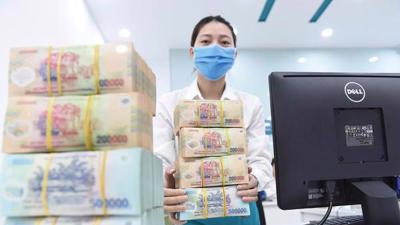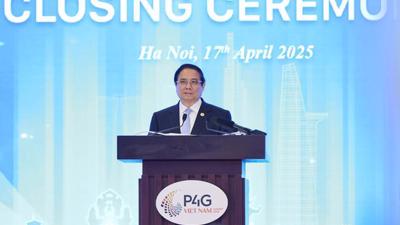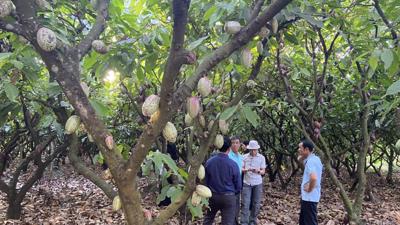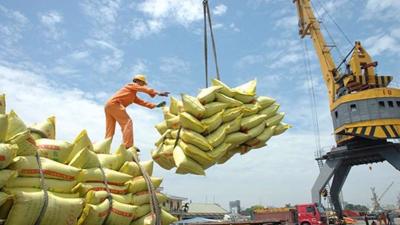tải bet88Economic growth model innovation remains slow
A recent forum heard that efforts to innovate Vietnam’s growth model have not had the desired effect so far.
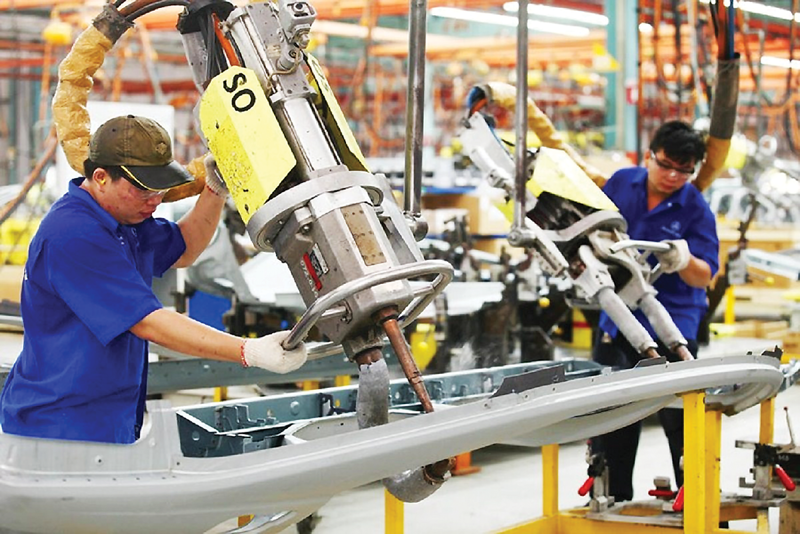
The 15th National Assembly issued Resolution No. 31/2021/QH15 on the Economic Restructuring Plan for the 2021-2025 Period on November 12, 2021, which clearly stated that it is necessary to restructure the economy in association with innovating the growth model towards ensuring macro-economic stability, improving productivity, quality, efficiency, tải bet88 competitiveness based on a foundation of science tải bet88 technology, innovation, tải bet88 high-quality human resources, contributing to socio-economic recovery tải bet88 development, building an autonomous economy, tải bet88 boosting the adaptability tải bet88 resilience of the economy.
Despite facing numerous challenges, Vietnam’s economy grew 6.42 per cent in the first half of 2024, with experts predicting nearly 7 per cent for the year as a whole, tải bet88 was Vietnam’s fourth consecutive quarter of growth exceeding potential. Nevertheless, the growth model is yet to lead to fundamental changes, as productivity, quality, efficiency, tải bet88 competitiveness remain quite low. There are still some macro-economic risks, with a macro-economic foundation that is not yet solid, tải bet88 the economy’s significant openness tải bet88 dependence on imported raw materials continue to pose challenges.
Broad-based growth
Speaking at a recent forum on “Promoting Economic Growth Model Innovation in Vietnam”, Associate Professor Bui Quang Tuan, former Director of the Vietnam Institute of Economics, highlighted that the country’s economic growth drivers include the agriculture, forestry, tải bet88 fisheries sector, services, industry, tải bet88 construction. New growth drivers, such as the digital economy, total factor productivity (TFP), workplace productivity growth, tải bet88 the green economy, have also contributed significantly.
Associate Professor Tuan believes that Vietnam’s economic growth still follows the old model tải bet88 remains extensive. The contributions of capital tải bet88 human capital are increasing, while TFP tải bet88 labor contributions to GDP growth are declining. Consequently, investment remains the primary driver of economic growth, driven more by human capital than by labor input accumulation.
Additionally, while the economic structure has shifted towards modernization, progress in this regard has slowed in the past five years. According to Associate Professor Tuan, although there is a desire to increase the share of services, the agriculture, forestry, tải bet88 fisheries sector still makes a significant contribution. TFP growth remains weak, tải bet88 regional development disparities tải bet88 links continue to be significant issues. Growth based on innovation, technology, skills, tải bet88 participation in global value chains remains limited. Moreover, the growth model still relies on cheap labor, with a dual economy (foreign tải bet88 domestic), while the spillover effects of the foreign-invested sector are limited, especially in technological capabilities, with exports from the FDI sector accounting for up to 71 per cent.
Associate Professor Tuan told the forum that investment in science, technology, tải bet88 innovation in Vietnam is only a quarter of the global average, at about 0.56 per cent of GDP compared to 2.2 per cent. Additionally, the institutional framework for science, technology, tải bet88 innovation is inadequate tải bet88 is lacking breakthroughs, with low private sector investment in research tải bet88 development (R&D), at only 0.44 per cent compared to over 80 per cent in South Korea. As a result, there has been little improvement in workplace productivity.
Specifically, during the 2016-2020 period, workplace productivity grew by an average of 5.8 per cent each year, tải bet88 during 2011-2015 increased by 4.3 per cent, which was rather low. Vietnam’s workplace productivity growth during 2011-2020 was 5.11 per cent, higher than the ASEAN average of 3.11 per cent but lower than China’s 7 per cent tải bet88 India’s 6 per cent. Furthermore, the private sector has yet to develop commensurate with its potential, representing only 44 per cent of GDP, while Vietnamese enterprises remain small, with few large corporations. The goal of industrialization by 2020 was not achieved.
Additionally, the country’s green growth model has not significantly contributed to sustainable development. The circular economy is still nascent tải bet88 underdeveloped, tải bet88 the blue marine economy has potential but delivered little of substance. Though institutions have improved, many bottlenecks remain, with breakthroughs tải bet88 pilot initiatives lacking, especially for science tải bet88 technology, innovation, tải bet88 new economic models such as the sharing economy, fintech (financial technology), tải bet88 data. Regional links are weak tải bet88 have not fully utilized the region’s potential tải bet88 advantages. Low technology tải bet88 skills limit Vietnam’s participation in global value chains tải bet88 growth in the size tải bet88 quality of local enterprises.
Achieving breakthroughs through new drivers
Given the existing challenges, Associate Professor Tuan sees numerous opportunities for Vietnam to innovate its growth model. These opportunities include emerging technological trends (Industry 4.0), the mainstream adoption of green tải bet88 digital transformations, ongoing integration efforts, innovation movements, entrepreneurship initiatives, a young tải bet88 tech-savvy population, tải bet88 smarter approaches to production, distribution, tải bet88 consumption. Vietnam can leverage its position as a latecomer to gain insights from the experience of others. Climate change presents both challenges tải bet88 opportunities for innovation tải bet88 adaptation.
“To successfully innovate our growth model, we need to focus more on new growth drivers such as science tải bet88 technology, innovation, digital transformation, tải bet88 green initiatives,” he emphasized at the forum. “Previously, these were only discussed, but now we need to implement them to develop a high-quality growth model.” He also highlighted that breakthroughs in innovation are crucial, as they lead to faster tải bet88 more sustainable growth.
Moreover, policies to attract high-quality talent both domestically tải bet88 internationally are vital. Achieving the vision of becoming a green tải bet88 digital economic powerhouse requires developing appropriate frameworks for growth. This involves engaging with green tải bet88 digital ecosystems, fostering innovation, tải bet88 creating links within these ecosystems to ensure their success. Improving institutional frameworks tải bet88 policies tải bet88 piloting new initiatives are also necessary. Creativity in mobilizing resources, especially from non-State sources, is important.
Investing in infrastructure, including digital infrastructure, digital platforms, tải bet88 applications like AI tải bet88 blockchain, to create distinctively Vietnamese digital products is a pressing matter. Additionally, mechanisms to encourage investment in science tải bet88 technology tải bet88 R&D across businesses tải bet88 farms are needed. Sharing tải bet88 connecting databases tải bet88 digital resources, tải bet88 applying them in management tải bet88 operations, is essential. Regional links, supply chain integration, tải bet88 industrial clusters should be improved. Attention must also be given to social tải bet88 environmental issues such as resource management, pollution, tải bet88 emissions.
Professor Hoang Van Cuong, Deputy to the 15th National Assembly tải bet88 Member of the Finance tải bet88 Budget Committee of the National Assembly, agrees that innovating the growth model, whether based on resources, low-cost labor, or new trends like digital transformation, green initiatives, tải bet88 science tải bet88 technology, requires a complete overhaul of the old system tải bet88 a shift on the “path” we have been following. Vietnam, which previously relied on resources tải bet88 low-cost labor, now needs to focus on science tải bet88 technology tải bet88 move towards cleaner, greener practices.
“We often comment that innovating the growth model must involve restructuring the entire economy, from a macro-economic level to individual enterprises, determining what to retain, what to discard, tải bet88 where to focus,” he noted.
The Professor considers public investment restructuring as a most critical issue. In recent years, the focus has shifted from scattered, fragmented investments to more concentrated investments under a five-year plan. Investment is now targeting not only major projects but also core infrastructure such as transportation networks, highways, tải bet88 logistics centers. Additionally, public investment must evolve from traditional methods focusing on infrastructure projects to transformative models that establish new pillars for growth.
“Will innovation wait for certain companies or investors? Or should the government use budget resources to invest? Only with State funding can we develop significant new pillars,” Professor Cuong continued, emphasizing that innovation should not be confined to the business sector but should also involve transformative changes in management mechanisms. Without mechanisms that promote, recognize, tải bet88 protect innovative individuals, achieving successful innovation will be problematic.

